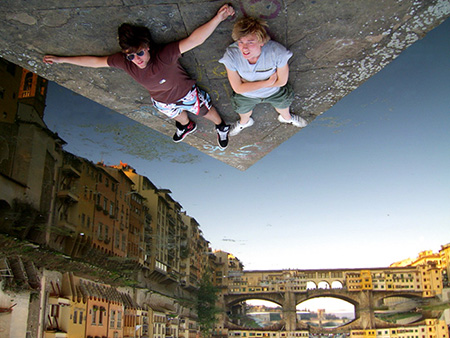optical illusions with Tag: Physics behind them

A rainbow is the product
of physics working for your
appreciation of beauty.~Kyle Hill
Physical illusions happen in the environment before the light enters our cornea. Scientifically, these are true optical illusions. Everyone can see them these real life examples because they are not created in our brain. We can explain genuine optical illusions by using physics.
The physics behind optical illusions
Seeing is a complex process that involves interpreting light signals captured by the eyes. The light comes from a source such as the sun, a candle, or artificial lighting. It hits an object and then bounces into your eyes, where it forms an image on the retina. Without the light bouncing around, you can’t see anything.
The surface of an object determines how the light bounces off:
- Very smooth surfaces (like glass or still water) reflect the light perfectly. (spectacular reflection)
- Rough surfaces (concrete or rough water) scatter the light around.
- White objects reflect all the wavelengths of the incoming light.
- Red objects absorb all the wavelengths of incoming light, except for the wavelengths we perceive as red.

This all happens outside of ourselves, in the environment. The light that bounces into our eyes, is what we see.
However, the light is not only influenced by the surface of an object. Temperature and the density of the medium it travels through also affect the light and the image we see. This is the physics behind optical illusions.
Reflection
Reflective surfaces such as mirrors or still water show an image that is not located in that place. Your own reflection in a mirror is an optical illusion. You are not on the other side of the glass.

Photo source: Christiaan Triebert
We have an entire page on the physics behind optical illusions with reflections.
Refraction
Rainbows look like objects, but their perceived location depends on the viewer’s position relative to the sun and the rain. And when you look through a lens or at objects underwater, you will find that the location of the image is not in the same place as the actual object.
Images as a result of light refraction are genuine optical illusions. You can read all about the physics behind refraction.

Mirages
See a collection of optical illusions with mirages.
A layer of hot air can bend and refract light, because hot air is less dense than cooler air. The resulting image is called a mirage. When there are multiple layers of hot and cold air, a fata morgana occurs.
Here are some examples of optical illusions in real life: